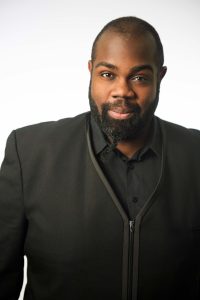
By Robert Croan
Seraphic Fire’s third annual Enlightenment Festival – two weekend programs each performed in four South Florida venues – is devoted to the church cantatas of Johann Sebastian Bach, some of the most sublime music in the Western civilization canon.
It’s also some of the most difficult music for present-day performers, technically and stylistically, but with a highly skilled vocal contingent of 14 and orchestra of 20 in the acoustical environment of the small churches, artistic director Patrick Quigley achieves with remarkable conviction what we believe to be the sounds and sensibilities of Bach and his environment.
The term cantata denotes a multi-movement vocal work with instrumental accompaniment, on a sacred or secular text. Bach, who was a Lutheran church musician most of his life, had to provide music for each service, performed before or after the sermon (or with the sermon in between the musical movements). The performing contingent was determined by who was available at any given time, so his church cantatas range from large-scale choral pieces with full orchestra to solo pieces with basso continuo (or “figured bass”), a low stringed instrument with keyboard filling in the chords.
Many of the cantatas are based on traditional German hymn tunes, known as chorales, which Bach sometimes incorporated into elaborate contrapuntal designs, elsewhere in simple four-part harmony. Bach’s four-part chorales became, in fact, the harmonic basis of nearly all Western music in the centuries that followed his death in 1750.
More than 200 of Bach’s cantatas have come down to us, and they’re numbered in the Bach-Werke-Verzeichnis, a formidable catalogue of Bach’s works first published in Germany in 1950. The listings are not chronological, however, so the BWV numbers are useful for identification purposes only. The sacred cantatas happen to be BWV 1-200.
And although Bach wrote no operas, his vocal works are very operatic, with recitatives declaiming, in the rhythm of speech, the appropriate setting and sentiments, while elaborate arias express personal commentary on the subject of the day. He also used the da capo (A-B-A) form, prevalent in Baroque opera, where the first segment (both text and music) is repeated at the end of each aria.
Each of the Enlightenment Festival programs comprises three cantatas. The first concert, seen Feb. 18 in Fort Lauderdale’s All Saints Episcopal Church, opened with one of the best and most typical in format, Herr, gehe nicht ins Gericht (Lord, do not judge us), BWV 105. The topic here is that man cannot survive God’s verdict. There’s an elaborate opening chorus, on words from Psalm 143, with a four-part chorale at the end, and two gorgeous arias in between.
Individual singers in Seraphic Fire are all musically accomplished and superb in blend and precision of ensemble, but their solo work can be variable. Soprano Rebecca Myers did very well with her aria, “Wie jammern Mich” (How sorry I feel), expressing the sinner’s fear and trembling, while interweaving with the splendidly played oboe obbligato of Geoffrey Burgess (playing a Baroque-style instrument). Brad Diamond’s weak tenor sound, however, was overpowered by the instruments in “Kann ich nur Jesum mir zum Freunde machen” (If only I can make Jesus my friend), failing to make the proper effect in one of Bach’s greatest tenor arias.
No such reservations apply to countertenor Reginald Mobley, the evening’s featured soloist, performing one of Bach’s cantatas for alto solo, Vergnügte Ruh (Contented Peace) BWV 170. Comprising three da capo arias, connected with recitatives, this work conveys the sinner’s remorse and anticipation of a better world to come. In the opening aria, Mobley, who has been with Seraphic Fire for 17 seasons and attained a major career on his own as well, maintained the pastoral melody’s smoothness, while enunciating the German words with clarity and imparting the meaning with subtle nuance and color.
The central aria uses the organ as an obbligato instrument, replacing the keyboard’s more common continuo function, and organist Leon Schelhase proved himself a virtuoso equal to the vocalist, with stunning effect. Shifting the mood, the final aria was sprightly and uplifting, despite the sentiment that “living revolts me,” and the commonly avoided interval of a tritone in the first line. Joviality in the face of death is not unusual in Bach’s religious music, the philosophy of the Lutheran church in his time contrasting the ills of this world with the predicted joys of the hereafter.
The core of Aus der Tiefen (From the depths), BWV 131, the cantata that concluded the program, consists of two arias, each in the fascinating format of the main vocal line enveloping a simultaneous chorale tune intoned by female voices. Baritone Steven Eddy and tenor Jacob Perry both did well in their respective assignments, and the choir sang cleanly and in tune, though the overall impact of this work was paler than what had come before.